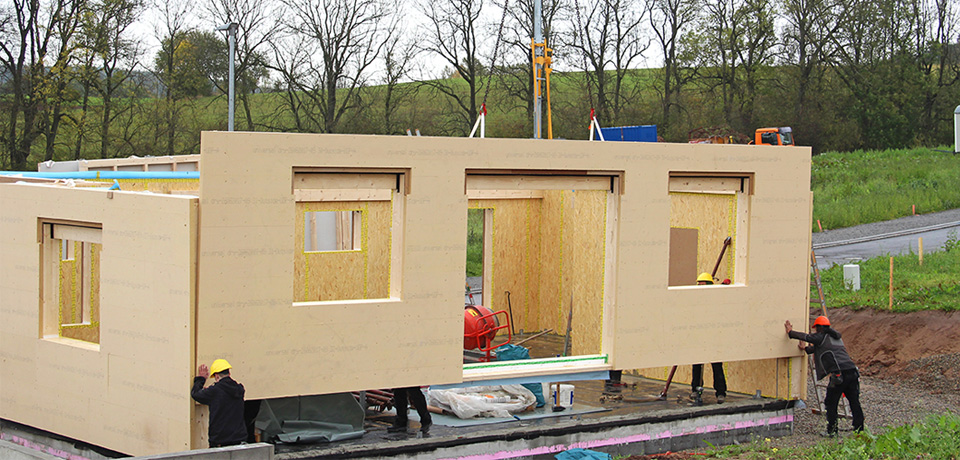Jennifer Weatherston, of award-winning builder Reid’s Heritage Homes, said the industry has to recognize the need to build homes affordably and fast.“There are huge efficiency gains to be made between the design and execution of the home in a factory setting, not to mention waste reduction,” Weatherston explained. The concept she is referring to is called prefabrication and involves building ready-to-assemble components in a factory and shipping them to site.
Prefabrication, or panelization, is not a new concept. The idea of a factory setting where accuracy, material quality and consistency is top of mind is intriguing. Imagine a worksite setting where full sections of materials are delivered in a flatbed and lifted into position by crane. Labour costs are reduced onsite, giving contractors the ability to handle more projects concurrently by cutting down the number of employees needed.
Panelization has been pitched as the way of the future before and still only represents eight per cent of the home-building market. This gap is an opportunity – given the pressure of the industry going forward, it offers a logical step in wood frame construction.
The process is continually improving. Today’s panel manufacturers use CAD design programs to send housing specifications to the shop floor, turning blueprints into ready-to-assemble sections in a matter of days. The process has become sophisticated enough to handle variances in local building codes with ease.

Lumber-frame panelization has the potential to mitigate two issues: the skilled trade crisis and housing affordability. However, it does not deal with impending net zero energy requirements. The panels need to be insulated, and the answer to all three challenges can be found in structural insulated panels (SIPs).
SIPs are made from a layer of expanded polystyrene foam core sandwiched between oriented strand board or plywood skins. When the foam bonds to the plywood, it magnifies the panels’ structural capacity and adds tremendous insulation.
A study conducted by the Structural Building Components Association compared the conventional building process to the panelized wood process. The study analyzed the building of a 2,600 square foot house and found the panelized build required 63 per cent fewer hours, generated 76 per cent less waste, and was 16 per cent less costly to build. While SIPs tend to be more expensive than wood panels, the potential for bottom-line savings is still available.
As a contractor, dealing with unpredictable time losses, material delays and onsite waste can ultimately have a significant impact on the bottom line. The level of quality, delivery and assembly speed offered by prefabrication allows contractors more efficient labour practices, higher profit potential and happier clients. There is an ever-growing number of Canadian prefabricated exterior wall panel manufacters and distributors, which helps increase supply and brings down material costs.






